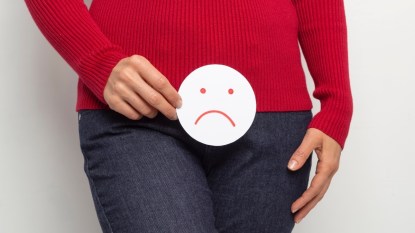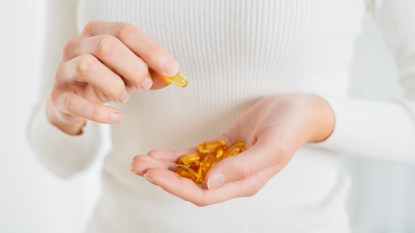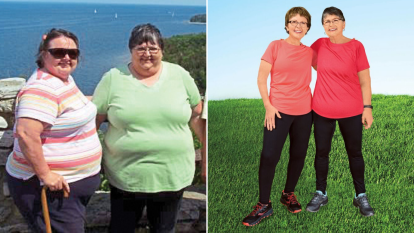The 7 Best Ways To Prevent Kidney Stones, According to MDs
Study: Simply cooking potatoes *this* way can cut your risk up to 74%
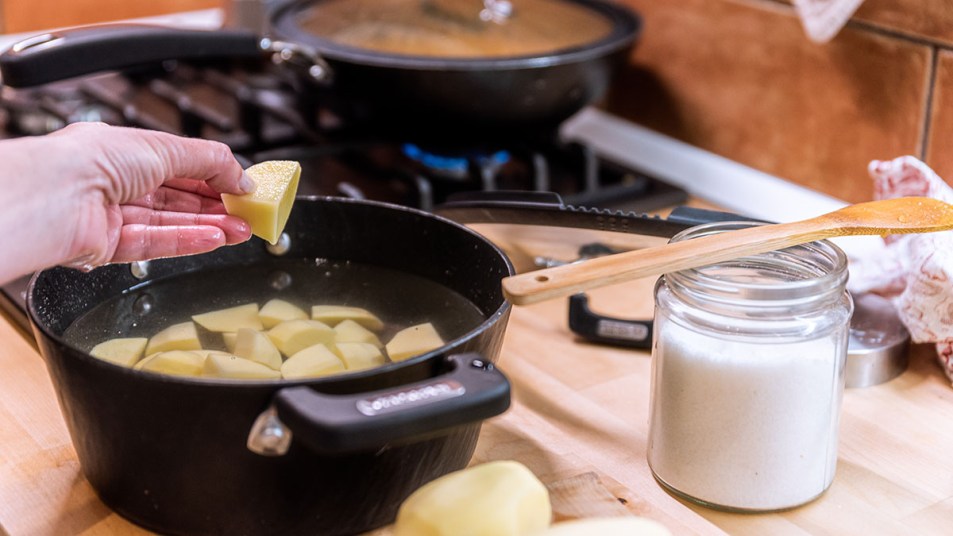
If you’ve ever dealt with the back pain, nausea and/or increased urge to urinate that comes from having kidney stones, you know how important it is to stop flare ups before they start. And while it’s true that for women the risk of kidney stones increases during menopause, there are easy ways to outsmart trouble. Here, experts share the best natural remedies for kidney stones that dramatically reduce the risk of kidney stone formation.
What are kidney stones?
The main role of our kidneys is to remove waste from the bloodstream and turn it into urine so that it can be excreted from the body. Among this waste are excess stores of calcium and other dissolved minerals and salts. That’s not usually an issue, but “kidney stones can occur when the concentration of stone-making compounds in urine is too high,” explains Melanie Betz, RD, a Chicago-based dietician who specializes in kidney health.
Kidney stones range in size and can be as small as a grain of sand or as large as a pearl. Some stones stay in the kidney, while others travel into the ureter, the tube between the kidneys and bladder. The stones either get lodged in the ureter, where they block urine and cause pain, or pass when you urinate. While most kidney stones pass on their own, if the stones are particularly large and painful, or if they get stuck in the ureter, they may require a trip to your doctor for treatment. Treatment options may include shock wave lithotripsy, which uses sound waves to break up the stones into smaller particles that be passed in urine, or a ureteroscopy, in which a scope is inserted into the bladder to pull the stone free.
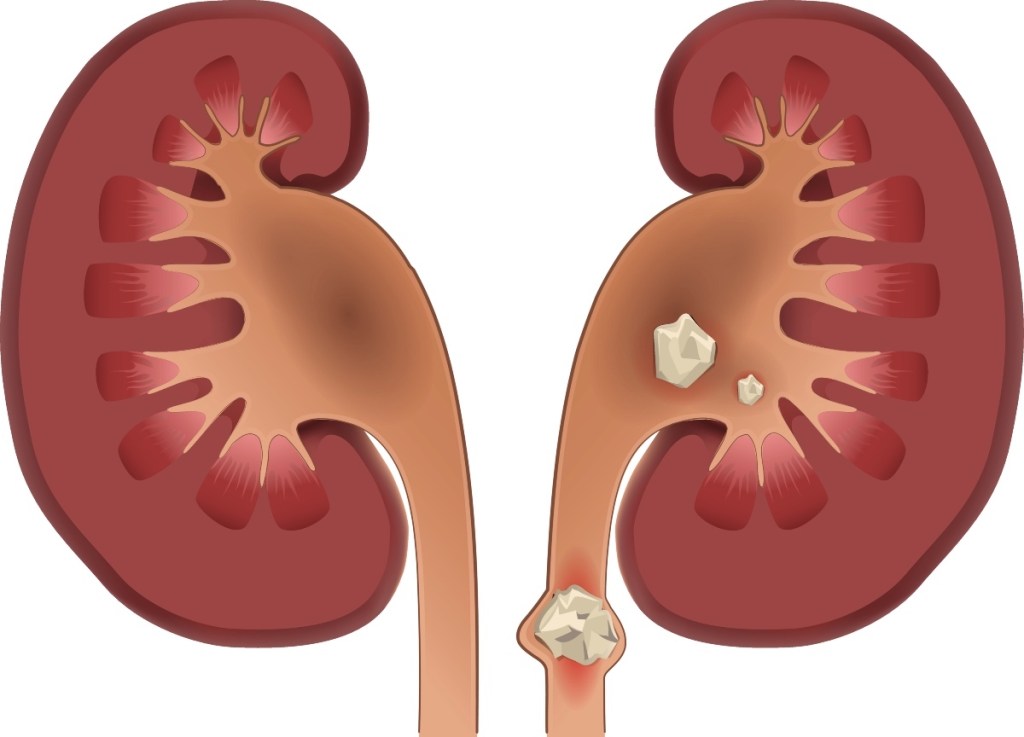
How kidney stones form
There are multiple types of kidney stones, but those made up of calcium account for about 80% of stones. Most commonly, these stones form when there’s too much waste building up in kidneys and there’s not enough urine to flush it out. This happens when when you’re chronically dehydrated, which becomes more common as you age.
High intake of oxalates – compounds found in foods like leafy greens, soy and potatoes – also puts you at risk for stones. Often called an “anti-nutrient,” oxalates bind to minerals in the stomach and intestines, which prevents the body from absorbing and using healthful compounds. They’re also a key building block of kidney stones. (Plus, oxalates may be the reason you can’t lose weight. Click through to learn how avoiding oxalates can speed slimming.)
What’s more, certain medications such as diuretics or antibiotics can all raise risk for kidney stones. As can menopause. Why? Estrogen has a protective effect on the urinary tract and kidneys. As levels decline during menopause, your risk of stones increases. And because estrogen also regulates the body’s calcium metabolism, a dip in this hormone can throw your levels of stone-forming calcium out of whack. No matter how they form, kidney stones can trigger unwanted symptoms like back pain, stomachaches, nausea, a burning sensation when you urinate and/or blood in your urine.
Boil potatoes if you’re prone to kidney stones
A healthful diet can help ward off painful stones. But for those prone to kidney stones, it’s better to scale on back on foods high in oxalates, especially potatoes. Other foods high in oxalates include spinach, soy, almonds, beets, navy beans, and rhubarb. Oxalates are typically expelled from the body as waste. But when the body is also flushing out minerals like calcium, oxalates can bind the the minerals, reducing the absorption of nutrients and potentially leading to kidney stones.
Tip: If you’re at an increased risk of kidney stones but find it hard to give up favorites like potatoes or leafy greens, there’s an easy way to reduce your risk of triggering a kidney stone flare up. Research in the Journal of Agricultural and Food Chemistry shows that boiling foods can reduce oxalate content by up to 74%. The researchers found that boiling as a cooking method was more effective than steaming (which removes up to 53% of oxalates) and baking (used only for potatoes, no oxalate loss).
The best natural remedies for kidney stones
Good news: Simply tweaking your diet is one of the best natural remedies for preventing kidney stones.
1. Snack on cheese
Calcium kidney stones are by far the most common, so it may seem counterintuitive to add more calcium to your diet to ward them off. But increasing your dietary intake of calcium with foods like cheese, beans and seeds can slash risk of kidney stone formation by 30%. Calcium binds to oxalates in the intestines, reducing the amount of oxalates that can be absorbed by the kidneys to form stones. Just watch out for high sodium levels in some of these foods, since salt can pull calcium out of bones and into urine. “Swiss, mozzarella and goat cheese are good higher-calcium, lower-sodium picks,” suggests Betz. So go ahead and order that cheesy pizza!
Tip: Experts often advise sticking to calcium-rich foods rather than reaching for a supplement. Why? Supplemental calcium can increase risk of kidney stones by 20%. One possible reason: Dietary calcium is more likely to be in the intestine at the same time as oxalates, which we also get from our diet. That makes it more likely to bind to and flush out the harmful compounds before stones can form.

2. Sip lemonade
When it comes to kidney stone prevention, sipping lemonade (or hot water with lemon, when it’s chilly out) is one of the best ways to dodge trouble. UC San Francisco research shows that the acidic juice doubles levels of urinary citrate, a compound that inhibits stone formation. It’s so effective, research in the journal Nutrients found that folks who drank lemonade for kidney stones daily lowered their risk for new stones by 87%. Study co-author Al Trinchieri, MD, explains that water dilutes urine so that crystals are less likely to form, while lemon juice’s plant acids act as natural kidney stone inhibitors. (Click through for more benefits of lemon water.)
Tip: Not a fan of lemon? Studies show that other citrus, like orange, lime juice, and grapefruit juice, can also lower your risk of developing kidney stones.
3. Kick back with a beer
Surprisingly, sipping a cold beer is also a natural remedy for kidney stones. The reason? It increases urine output, so your body is more likely to flush out stone-causing compounds. Indeed, one study in the American Journal of Epidemiology revealed that you’ll lower your risk of kidney stones by 40% by simply sipping on one bottle of your favorite brew daily. But if you have more than a bottle or two, be sure to rotate in a glass of water, too. Since alcohol may dehydrate you, drinking too much can increase kidney stone risk.
4. Savor another cup of joe
Drinking a bit more coffee daily can reduce your risk of kidney stones by 40%, report researchers in the American Journal of Kidney Disease. Participants in their study who increased their coffee intake from 1 cup to just 1.5 cups daily saw the benefit. This natural remedy for kidney stones works thanks to diuretic properties that increase urination, helping to flush stone-forming minerals from the body.
5. Try an apple cider vinegar “shot”
Apple cider vinegar (ACV) is known to aid in weight loss, balance blood sugar and even improve heart health. And according to a study published in the journal eBioMedicine, it’s also an effective natural remedy for kidney stones. By binding to calcium and increasing urinary citrate, ACV lowered the risk for new stone formation by 69%. To get the benefits, take a “shot” of ACV, about 1 oz., daily. Or dilute the vinegar in about 4 oz. of water to tamp down the sour taste. (Interested in more health-boosting shots? Click through to discover the benefits of ginger shots.)
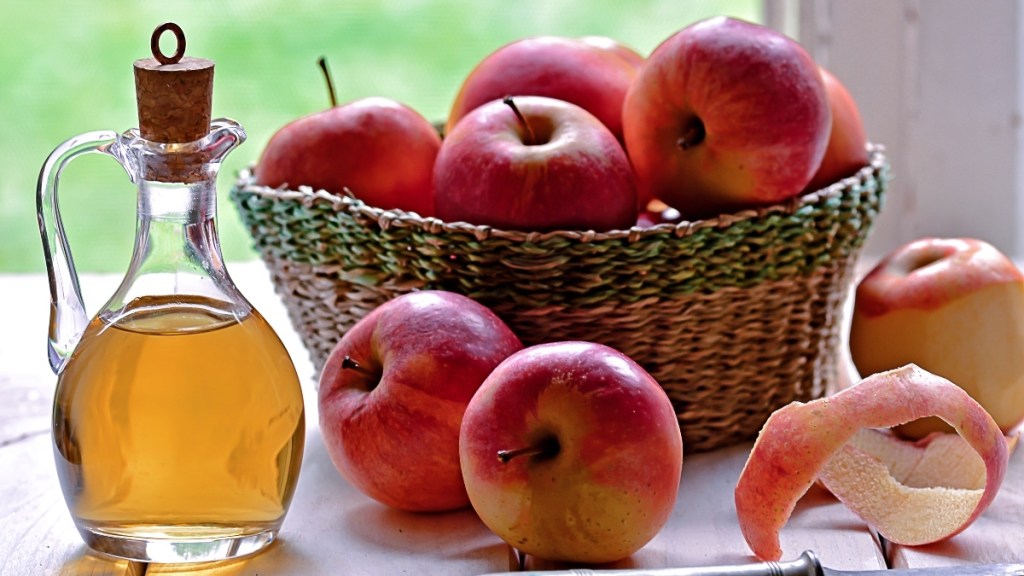
6. Swap your tea
There’s surprising culprit contributing to increased risk of kidney stones: tea. Black tea is high in oxalates that can form stones. And iced tea is more problematic than a hot cuppa, since its longer steeping time raises oxalate levels. Complicating matters: “Dehydration can increase the risk of oxalates forming into kidney stones,” cautions Anju Yadav, MD, a kidney specialist at Thomas Jefferson University Hospital in Philadelphia. And because tea is a natural diuretic, sipping it in high quantities can up dehydration risk. But the right tea can prevent dehydration and cut kidney stone risk. Her advice: Switch to low-oxalate green or herbal tea with a squeeze of lemon (either hot or iced). “Citrus contains citrates, which help dissolve oxalates before they can form kidney stones,” Dr. Yadav explains.
7. Try a supplement duo
Taking a combination potassium-magnesium supplement daily can blunt the absorption of stone-forming oxalates. The result: You’ll cut risk for recurrent kidney stones by 85%. And in happy news, University of Texas Southwestern Medical Center scientists say the supplements also protects against diabetes and high blood pressure that can cause kidneys to falter. In fact, they found that folks who boosted their magnesium levels enhanced kidney function 103%. One to try: Life Extension Potassium with Extended Release Magnesium (Buy from iHerb.com, $11.25).
Read on for more ways to protect your kidneys:
Improve Kidney Function Naturally To Dramatically Decrease All-Body Bloat
Drinking This Popular Beverage Regularly Could Lower Your Risk of Kidney Stones
MD Reveals the Kitchen Staple That Outsmarts Painful Kidney Stones For Pennies
Chronic Kidney Disease Affects One in 7 Us Adults — Here’s How To Prevent It
A version of this article originally appeared in our print magazine, Woman’s World.
This content is not a substitute for professional medical advice or diagnosis. Always consult your physician before pursuing any treatment plan.



